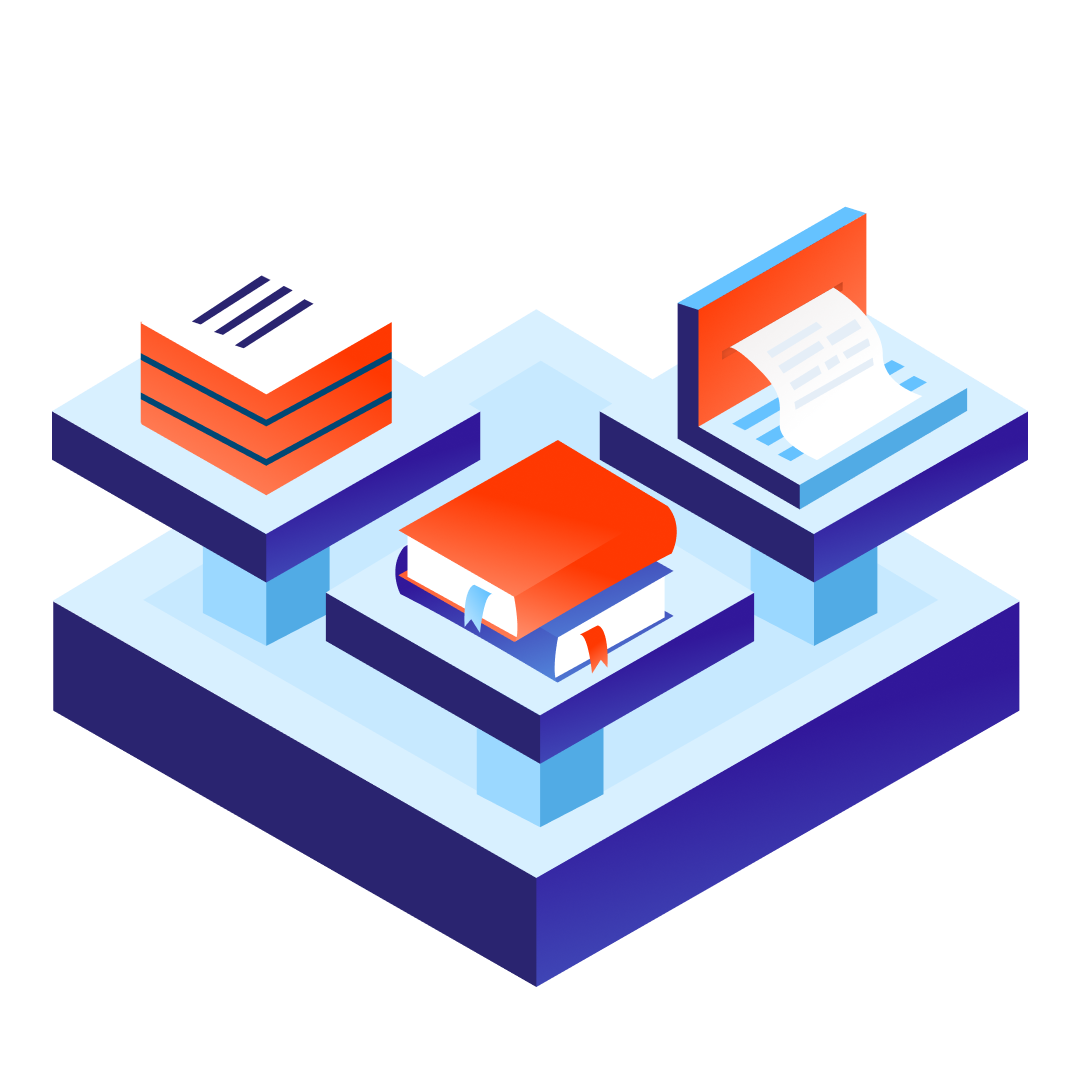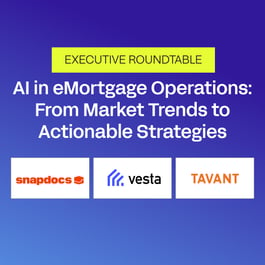Artificial intelligence (AI), particularly in mortgage lending, has emerged as a practical tool to enable lenders to compete, increase profits, and deliver borrowers faster, smoother closings. From speeding up document checks to catching errors before they become costly, automation and AI-powered tools are transforming mortgage operations.
This post is the first in a 3-part series on how AI is reshaping mortgage operations. Across the series, we’ll uncover how AI works, why it matters for lenders today, and how to effectively put it into practice. In this article, we’ll start with the fundamentals of AI in mortgage operations and how to get started.
Curious about the rest of the series? Check out Part 2 and Part 3.

Why AI matters: the opportunity for lenders
Mortgage lending is one of the most document and data-heavy financial processes, making it especially prone to costly mistakes. Simple collateral mistakes—like a missing signature, a mistyped number, or an overlooked disclosure—add up, costing lenders between $450 million and $1 billion every year1.
These inefficiencies ripple across the business:
- Higher costs: Repetitive staff reviews quickly accumulate, and fixing collateral errors can cost lenders $500 to $1,500 per loan1.
- Slower closings: Errors and rework drag out the loan's lifecycle.
- Greater risk: Missed compliance issues expose lenders to penalties.
- Poor borrower experience: Closing delays frustrate borrowers and erode satisfaction.
The good news is that AI-powered technology and automation are making it easier to fix these errors quickly and accurately. But success isn’t just about using automation—it’s about applying the right kind of AI to the right part of the process.
The different types of AI in mortgage operations
Mortgage operations are transforming through advances in rules-based automation, pattern recognition AI, and generative AI. Let’s dig into each type:
#1. Rules-based automation
At its simplest, automation follows a set of predefined rules. Think of it like a digital checklist. These systems thrive when the task is repetitive and structured. In mortgage, this approach is best suited for workflow and task management, where processes follow clear, repeatable steps. Notary scheduling is a prime example. Rules-based logic can automatically assign notaries from a network based on pre-set requirements such as approved time intervals, positive reviews, or specific certifications.
#2 Pattern recognition AI (discriminative AI):
This type of AI learns from past data to identify patterns and make predictions. Instead of simply following instructions, it can classify information and detect anomalies. It is especially powerful for document-heavy processes such as classification, annotation, indexing, and quality control. For example, lenders can use pattern recognition to compare loan documents, determine where signatures are missing, and highlight files that are most likely to contain errors.
#3 Generative AI:
The newest wave of AI goes beyond rules and recognition to create new outputs. Trained on large volumes of data, it can generate summaries, interpretations, or entirely new content. Generative AI tools (e.g., ChatGPT, Claude, Gemini) can be applied to a range of tasks—from extracting data from closing documents to powering chatbots that answer borrower questions about their loans.
Together, these approaches show the full range of how AI enhances mortgage operations—from automating structured workflows, to detecting complex patterns, to generating new insights. When applied thoughtfully, each layer strengthens the others to reduce manual work, increase accuracy, and create a smoother experience for lenders, settlement teams, borrowers, and secondary market participants alike.
Common misconceptions about AI
Clear use cases for AI exist, but myths remain—uncovering the truths behind them allows teams to embrace AI with confidence.
Myth: AI replaces people.
Truth: Applying AI in mortgage operations is an optimizer, allowing employees to focus on work that requires human oversight, problem-solving, and relationship building.
Myth: AI is too complex to implement.
Truth: AI tools should integrate seamlessly into existing workflows, minimizing change management friction. The most effective approach is to start small by automating high-volume, repetitive tasks, track results, and expand gradually. With the right partner and technology you can quickly implement, scale, and realize value.
Myth: AI is only for large organizations.
Truth: Adopting AI-powered automation allows companies of all sizes to operate more efficiently, stay competitive, and keep staff focused on higher-value work. AI works best with humans in the loop, combining machine efficiency with human judgment.
Putting AI into practice
The question is no longer if AI works, but how to put it into practice. Here’s a simple roadmap for lenders to get started:
Step 1: Spot the pain points
Look for processes that are slow, repetitive, or error-prone. Understand how these areas are impacting your bottom line by creating benchmarks and tracking improvement over time.
Step 2: Pick the right technology partner
Choose a solution tailored to your goals and that integrates easily into your existing workflows. Look for partners who understand mortgage workflows, not just generic AI.
Step 3: Get a quick win
Begin with one high-volume, low-judgement task—such as validating borrower data or catching missing pages. Early wins show your team what’s possible and help build trust in the technology.
Step 4: Measure results
Track metrics based on the pains you’re working to solve—examples like time saved per file, error reduction, or closing speed. Benchmark progress against your goals and hold partners accountable for the performance promised.
Step 5: Scale up
Once you see the impact, expand AI to more of the loan lifecycle to create a smarter, more efficient operation.
Looking ahead
AI is no longer optional. It's becoming a requirement for lenders that want to remain competitive. AI not only drives efficiency and creates a more seamless experience for borrowers (and the teams that serve them), but also reduces costs that can be reinvested into the business to fuel growth.
In the next article, we’ll focus on where to begin. Hint: applying AI in the back office is the fastest path to measurable ROI—since it’s the most costly, lowest-risk area of the mortgage process and offers the greatest potential for efficiency gains.
1 Source: Data averaged from STRATMOR Group and MBA, 2025.

















